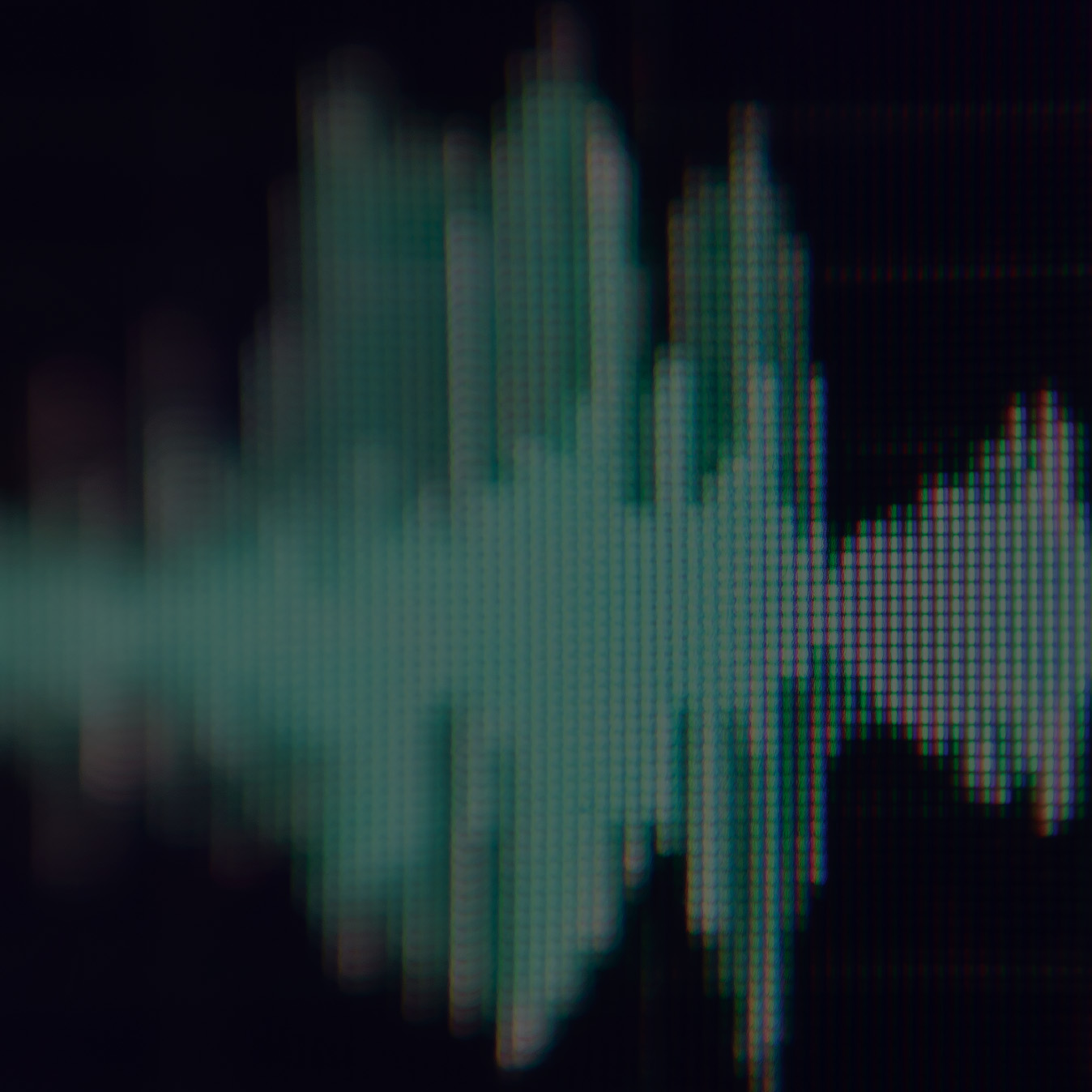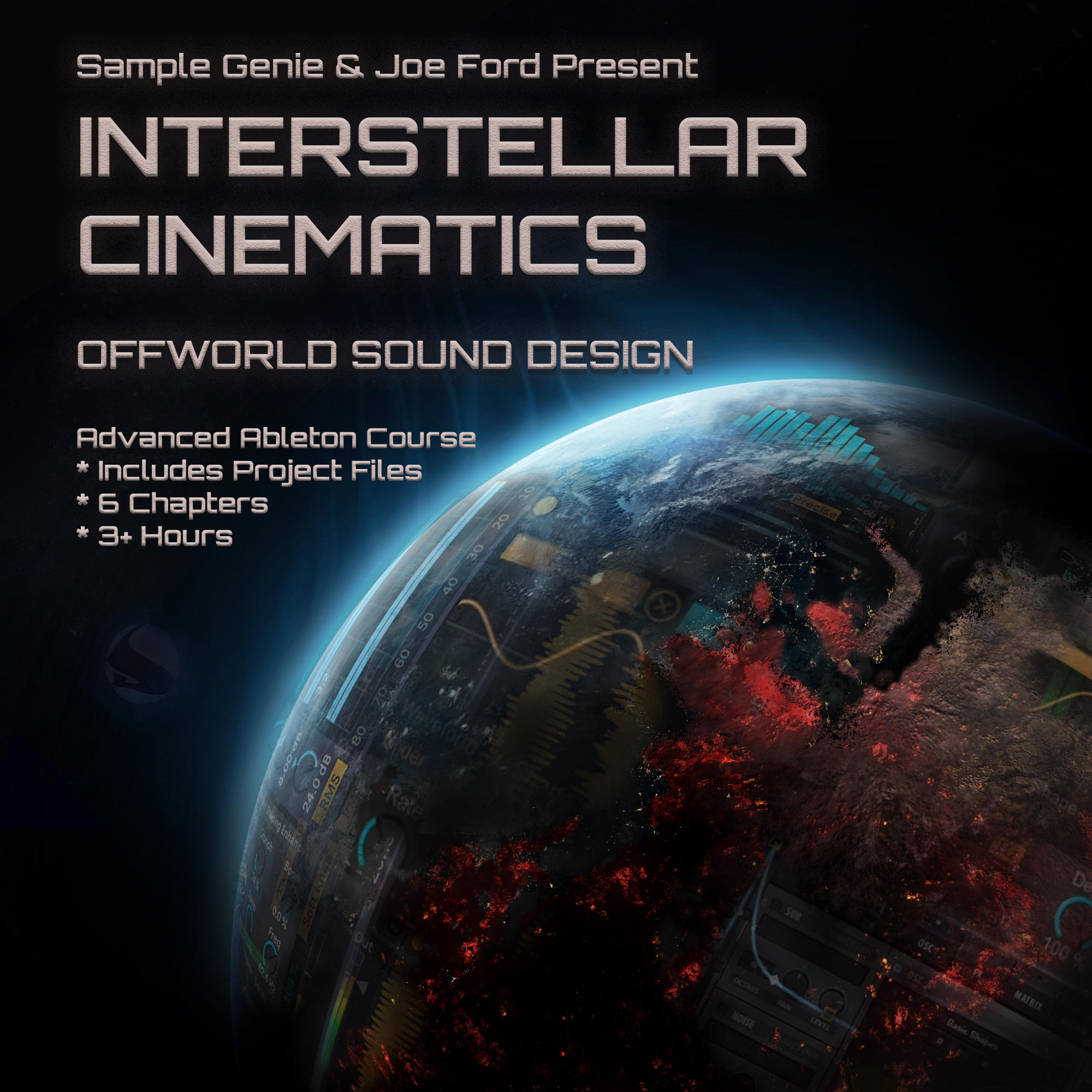shrike
Forum Replies Created
-
AuthorPosts
-
,
 shrikeParticipant
shrikeParticipantNot sure you would call many of those bass sounds a reese, although some def are.
Detuned saws, my man. That is the start.
For grins I made a fresh reese. This should knock your dick in the dirt at least a little.
Re-create this in Serum and then tweak to your heart’s content (be sure to click the image to get all the FX & whatnot…4 images in total):
Pay attention to the curve in the bottom right, for the “note” property. This is what creates the movement at higher notes, and it’s a very sensitive parameter. The other key is the slight detuning in the “FIN” tuning for each oscillator. This is what gives the reese its primary character: two sawtooth oscillators fighting against each other ever so slightly.
Also note that no sub was needed to layer underneath. This patch hits 0dbfs for the fundamental sub freq, and is the start of a loud tune, if so desired.
Also, I made this one a bit neuro-y. I’m just not a liquid guy…neuro is in my DNA. Most of this is caused at the filter level, esp the level of resonance.
As Harry said with his patches (gonna knick those, BTW!), please ask any questions you may have.
_-| get to work |-_
, shrikeParticipant
shrikeParticipantState of Mind, for sure. Inside Info also has a good bass class.
And as Genie said, sprinkled throughout. I like Jade’s neuro bass class too. Good foundational info.
_-| get to work |-_
, shrikeParticipant,
shrikeParticipant, shrikeParticipant
shrikeParticipantSpeaking to the issues of chronology in this thread:
Some of it may be due to the fact that I moved some posts into this thread after they were posted, because they were created after this thread was created.
Genie, if you read this, maybe you could ask the developers to look into it with that knowledge in mind.
And moving forward, if we can just make sure to use this one thread for sharing, it should all sort itself out.
We’re trying our best, folks!
_-| get to work |-_
, shrikeParticipant
shrikeParticipantI know what you’re talking about, I think. I think it’s open in a tab at home. I’ll see if I can dig it up tonight
_-| get to work |-_
, shrikeParticipant
shrikeParticipantBig ups, Mr 6F7A!
Definitely mashing up big tings.
RESPECT
_-| get to work |-_
, shrikeParticipant
shrikeParticipantNo, your kick does not need to be an E to be in key. It depends on what key you want to be in. Google and download some images that show notes in a scale. To be in key would be to select any notes within that scale. This is a very simple explanation, and there are other things to consider.
The most common key in drum and bass is F minor. The notes in it would be F,G,G#,A#,B,C,C#,& D#. The reason it’s most common is that F0 hits at a really nice spot on the sub, lots of energy, not much loss. Technically you could use any notes in that scale, but the foundation, likely the sub, should be an F0 note. F0 is probably too low for a dnb kick. And doubling it, to around 86hz, which is F1, might be too high for a kick (we’re talking subjective taste, here, not empirical “rules”), so you might set your kick to, say C2, a nice middle ground between the F’s, and still in Fm key. Then your snare, which often peeps want to feel a little elevated from the kick, ala low.high.low-high, where kick is “low” and the snare is tonally higher, that bit you might put at, say C#4, or maybe F4.
So you need to consider octaves, then tones within that octave. The part about being in key is making sure that notes not in your chosen key don’t sneak in. If you put an F# in an Fm key, it becomes something else, and has a chance of just sounding bad and out of key.
This is an extremely useful reference that many of us use:
http://pages.mtu.edu/~suits/notefreqs.html
Between that and having a chart of musical scales, you can find your way fairly objectively…but of course your ears are also a guide.
_-| get to work |-_
, shrikeParticipant
shrikeParticipantThe resampling part of Joe’s lesson will come soon.
_-| get to work |-_
, shrikeParticipant
shrikeParticipantHave you watched Joe’s lesson from this month? Has exactly what you are looking for, it’s really good stuff.
_-| get to work |-_
, shrikeParticipant
shrikeParticipantWant some new synth fun? Cheggidout:
_-| get to work |-_
, shrikeParticipant
shrikeParticipantBig big ups the Texas DnB Massiv!
_-| get to work |-_
, shrikeParticipant
shrikeParticipantI’m not sure I can help with the upgrade question fully, but if the reason is you’re bored of Serum’s WT’s, or you want more synth options, I might say…no?
Serum allows you to *create* new WT’s within the synth, and to *import* any WT’s from anywhere, so if you’ve exhausted all of that and are still bored, you will be mightily disappointed with the Ableton WT synth, which does not allow for either. Although in the upcoming 10.1 update, they are finally introducing WT import…something that they arguably should have done from the jump.
Operator & Wavetable are fine synths. There is actually a lot you can do with Operator. But is it worth $370? I have a hard time saying yes. For that much you could go get UVI Falcon and have exponentially more synthesis & sampling capabilities than what you would get back from the Live synths (flame on!). There are some pretty decent audio FX that you would get with Suite, but it sounds like you’ve already got a pretty decent hoard of those. And the other Live (or should I say A/A/S) synths, like analog, poli, collision, etc…I just don’t ever use. I have other synths that I prefer. I will admit that I do use Sampler often, as my bread and butter sampler. I’ve never liked Kontakt, mostly because of the UI, and haven’t since its inception…I was well-disappointed in NI’s decision to just regurgitate the early 2000’s design for Kontakt 6…Fucking. Horrendous.
The place where you might really get your money’s worth is in Max4Live, and the additional Midi & Audio FX it provides. Max4Live is pretty powerful, but honestly, if it were me, I would take that money and buy a new copy of Bitwig 3, which kinda kicks the shit out of what M4L tries to be, at least on the user side (as opposed to creating M4L devices…if you want that then the decision is made, although BW’s new feature, The Grid looks to even that playing field as well). M4L isn’t a terrible attempt to expand the modulation capabilities of Live, but Bitwig is leagues better in that department, with the concepts at the heart of how BW was built, as opposed to being bolted on, as M4L is. And maybe I am a little biased right now, as currently ALL of my Max devices have taken a shit and won’t work AT ALL, and haven’t for almost a month now. I’m afraid it’s going to take a full re-install to fix it, which pisses me off, and I have just been working around it. Also, BW is easy to learn…in fact if you know Live, you already know 95% of BW, and even many of the hotkeys are the same or similar.
Finally, if you are bored with Serum’s included WT’s, I am happy to share my entire WT collection for DL. You can’t possibly be bored with this many WT’s, and again, if you are, Wavetable isn’t gonna scratch that itch.
https://www.dropbox.com/sh/mahd9fg7pfez7hr/AACcCdO7_kcKmAZoRFm0BKJNa?dl=0
On Windows, extract these to:
C:\Users\*YOUR_USER_NAME*\Documents\Xfer\Serum Presets\Tables
On Mac side you are on your own, but it shouldn’t be hard to find.
There are literally 1,000’s of WT’s in that link, some that I have created myself.
I don’t think I’ve made your decision any easier, but these are my honest thoughts.
Good luck!
_-| get to work |-_
, shrikeParticipant
shrikeParticipantI’m having a bit of a hard time sussing out the questions here. But I’ll try:
Boosting 2-3khz is ok to do, but it’s not going to give you strong leads or mid basses. Those are gnarly, PAINFUL freqs and should be boosted with caution. If you’re not sure what I mean, take serum (or any synth), make a sine tone that hits 2.5khz, and then try and boost it. You’ll be tapping out very quickly from the pain, they are super sensitive freqs for the human ear, as they hover around primary human voice frequencies (~1.5khz) and we humans are evolved to cue in on them. And sometimes they can be “drowned out” by having a lot of surrounding freqs be as loud or louder, but this is a mixing mistake, as the gnarly sounds are still there, and will eventually cause serious ear fatigue in your listener, and in you.
Does a filter change frequency too, or just the sound?
Filters can drastically change frequency response. An eq is just a series of filters. And if you’re talking about lpf or hpf, there is also the resonance consideration, which can actually boost frequencies at the crossover point.If you’re looking to get deep sub, but also some midbass character sounds, check out the QZB lessons in the SG backlog. There are some others, too, but QZB did a really good job of explaining how to manage sub against low and mid bass frequencies.
_-| get to work |-_
, shrikeParticipant
shrikeParticipantBitwig 3 in public beta today!
Very excited about this…
_-| get to work |-_
, shrikeParticipant
shrikeParticipantWelcome lomadnb!
_-| get to work |-_
-
AuthorPosts



